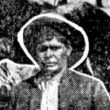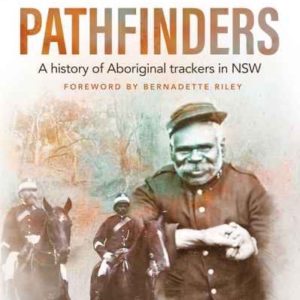Loading map...

Peter Wandy was born in Western Australia in the early 1880s, possibly in the Kalgoorlie-Coolgardie district, which is approximately 550km east-north-east of Perth. As a young man he was the tracker at Kalgoorlie for four years before picking up work on a cattle station. Peter quickly left after suffering physical abuse at the hands of the boss. He moved to Sydney and after living on the streets travelled out to the Aboriginal reserve at Sackville Reach on the Hawkesbury River. He encountered missionaries from the non-denominational Australian Aborigines Mission at Sackville and converted to Christianity. Peter attended a seminary in Adelaide and also toured with Rev. E.J. Telfer in Western Australia on bicycles for 12 months, preaching Christianity to local Aboriginal people. A master player of hymns on the gum-leaf, Peter also operated the lantern slide during meetings[ref]Amongst Australian Aborigines by E.J. Telfer, 1939, self-published; Australian Aborigines Advocate 31 March 1908: 6 [/ref].
Peter Wandy was never formally employed as a NSW tracker, however he assisted the police to search for a missing three-year-old-boy in thick banksia and eucalyptus scrub at Mount Colah in March 1911. The tracks initially led to a small pond and it was feared that the boy had drowned. When a search of the water failed to produce a body, Peter soon picked up the tracks again heading towards Galston. The boy was found in an exhausted state and made a full recovery.[ref]Daily Telegraph 27 March 1911: 9; The Sun 25 March 1911: 8 [/ref]
Afterwards, Peter moved to the south coast of NSW and lived at Wallaga Lake Aboriginal Station for a time. His interest in Christianity diminished as he grew older. In July 1921 he developed pneumonia and died at Bega Hospital without issue.[ref]Death Certificate of Peter Wandy 1921/011452; Australian Aborigines Advocate 31 July 1921: 3[/ref]

 This website explores the history of Aboriginal trackers in NSW from 1862 when the current NSW Police Force was established through to 1973 when the last tracker, Norman Walford, retired. You can read about the lives of individual trackers and some of the incredible tracking feats they...
This website explores the history of Aboriginal trackers in NSW from 1862 when the current NSW Police Force was established through to 1973 when the last tracker, Norman Walford, retired. You can read about the lives of individual trackers and some of the incredible tracking feats they...

There were over 200 NSW police stations that employed Aboriginal trackers between 1862 and 1973. Many were concentrated in the central-west and north-west of the state, the agricultural and pastoral heartland of NSW. This is because one of the main jobs of trackers was to pursue sheep, cattle and horse thieves. Trackers sometimes lived in small huts out the back...
Learn More ►
Pathfinders book Pathfinders, A history of Aboriginal trackers in NSW, written by Dr Michael Bennett and published by NewSouth, is now available from all good bookstores. Click on the link below to order your copy. https://www.abbeys.com.au/book/pathfinders-a-history-of-aboriginal-trackers-in-nsw.do Early History Since the beginning of the colony, government agencies, explorers, surveyors and members of the general public called upon the tracking...
Learn More ►